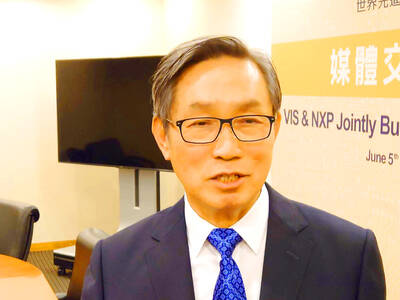Blu-ray DVD hardware and disc sales have boomed despite the drubbing that tough economic times are giving the consumer electronics industry.
Blu-ray player technology is rife in new-generation TVs, computers and DVD players touted last week at the Consumer Electronics Show (CES) in Las Vegas where, a year earlier, it won a format war with HD DVD.
Blu-ray “adoption” surged last year while US sales of movie discs in the format more than quadrupled, with nearly 29 million bought in the final quarter of the year, industry statistics showed.
The latest Batman film, The Dark Knight, became the first title to sell more than 1 million discs in Blu-ray
“In one of the most difficult retail quarters in history, Blu-ray managed to grow significantly,” Blu-ray Disc Association president Andy Parsons said during a discussion with industry analysts at CES, which ended yesterday.
Parsons maintains that Blu-ray players are catching on faster than standard DVD players and compact disk music players did. Some 10.7 million Blu-ray players were in US homes or offices by the end of last year, Parsons said.
More than half of those players are in Sony PlayStation 3 videogame consoles, which can be used to watch films as well as play games.
Sony’s Blu-ray technology was declared victor in its battle with Toshiba-created HD DVD at CES last year after Hollywood powerhouse Warner Bros switched to the Blu-ray camp.
Toshiba subsequently abandoned production of HD DVD players.
Last year “was a critical year for the Blu-ray format,” said analyst Paul Erickson, director of DVD and HD Market Research at DisplaySearch.
“Not only is demand going to steadily increase but the industry’s ability to tap into that demand is going to increase as well,” he said.

STEEP DECLINE: Yesterday’s drop was the third-steepest in its history, the steepest being Monday’s drop in the wake of the tariff announcement on Wednesday last week Taiwanese stocks continued their heavy sell-off yesterday, as concerns over US tariffs and unwinding of leveraged bets weighed on the market. The benchmark TAIEX plunged 1,068.19 points, or 5.79 percent, to 17,391.76, notching the biggest drop among Asian peers as it hit a 15-month low. The decline came even after the government on late Tuesday authorized the NT$500 billion (US$15.2 billion) National Stabilization Fund (國安基金) to step in to buoy the market amid investors’ worries over tariffs imposed by US President Donald Trump. Yesterday’s decline was the third-steepest in its history, trailing only the declines of 2,065.87 points on Monday and

TAKING STOCK: A Taiwanese cookware firm in Vietnam urged customers to assess inventory or place orders early so shipments can reach the US while tariffs are paused Taiwanese businesses in Vietnam are exploring alternatives after the White House imposed a 46 percent import duty on Vietnamese goods, following US President Donald Trump’s announcement of “reciprocal” tariffs on the US’ trading partners. Lo Shih-liang (羅世良), chairman of Brico Industry Co (裕茂工業), a Taiwanese company that manufactures cast iron cookware and stove components in Vietnam, said that more than 40 percent of his business was tied to the US market, describing the constant US policy shifts as an emotional roller coaster. “I work during the day and stay up all night watching the news. I’ve been following US news until 3am

Six years ago, LVMH’s billionaire CEO Bernard Arnault and US President Donald Trump cut the blue ribbon on a factory in rural Texas that would make designer handbags for Louis Vuitton, one of the world’s best-known luxury brands. However, since the high-profile opening, the factory has faced a host of problems limiting production, 11 former Louis Vuitton employees said. The site has consistently ranked among the worst-performing for Louis Vuitton globally, “significantly” underperforming other facilities, said three former Louis Vuitton workers and a senior industry source, who cited internal rankings shared with staff. The plant’s problems — which have not

TARIFF CONCERNS: The chipmaker cited global uncertainty from US tariffs and a weakening economic outlook, but said its Singapore expansion remains on track Vanguard International Semiconductor Corp (世界先進), a foundry service provider specializing in producing power management and display driver chips, yesterday withdrew its full-year revenue projection of moderate growth for this year, as escalating US tariff tensions raised uncertainty and concern about a potential economic recession. The Hsinchu-based chipmaker in February said revenues this year would grow mildly from last year based on improving supply chain inventory levels and market demand. At the time, it also anticipated gradual quarter revenue growth. However, the US’ sweeping tariff policy has upended the industry’s supply chains and weakened economic prospects for the world economy, it said. “Now